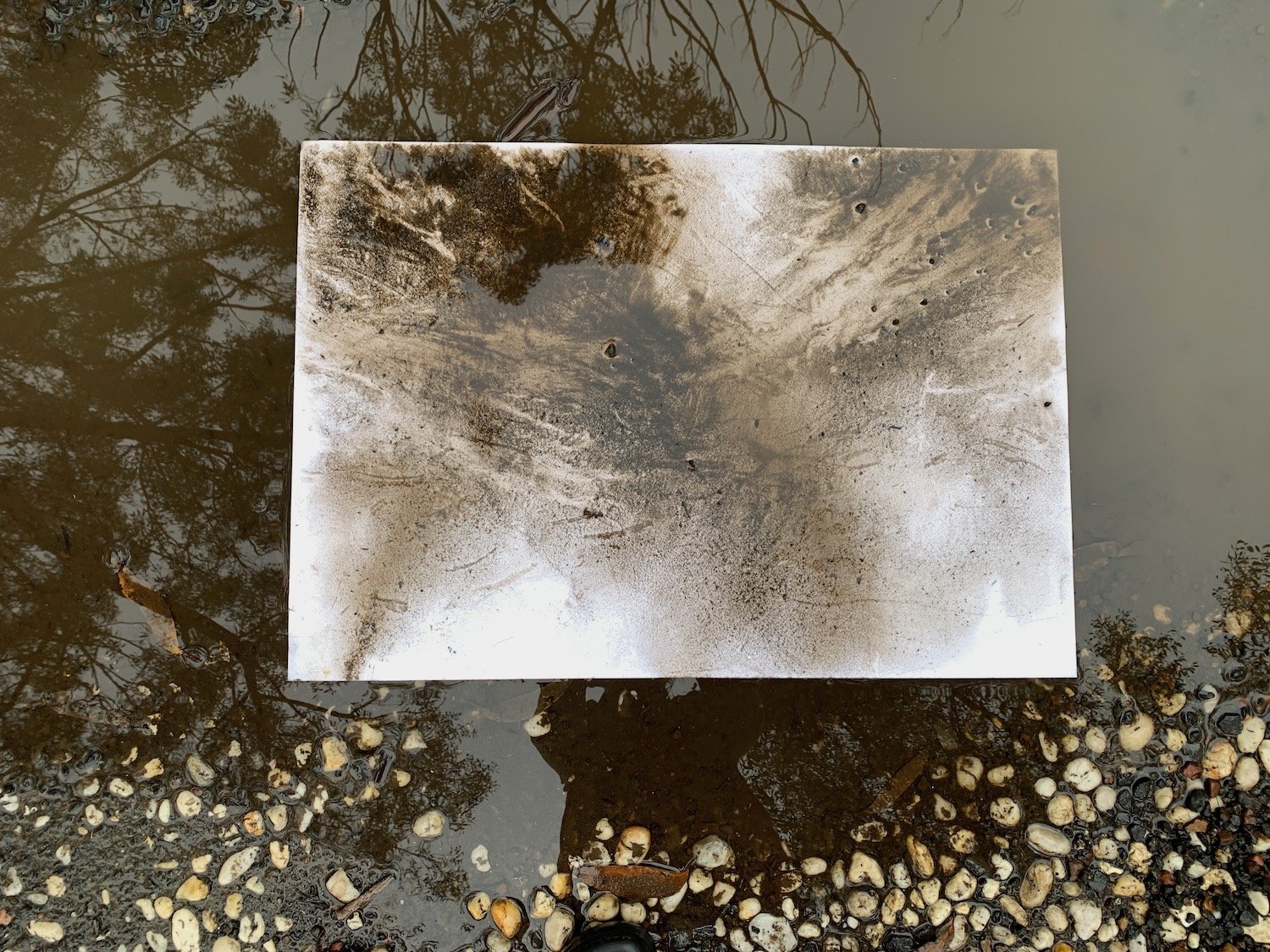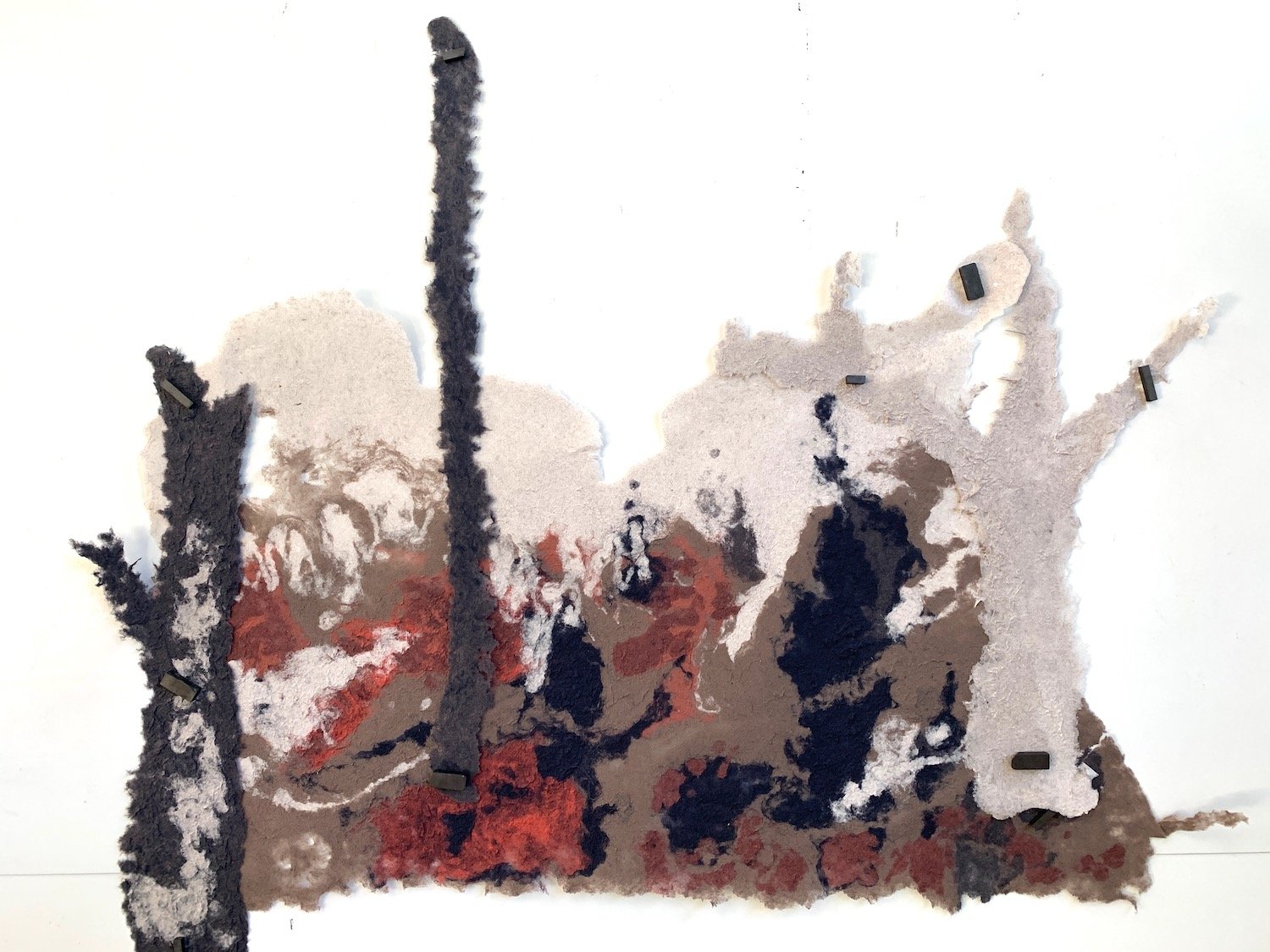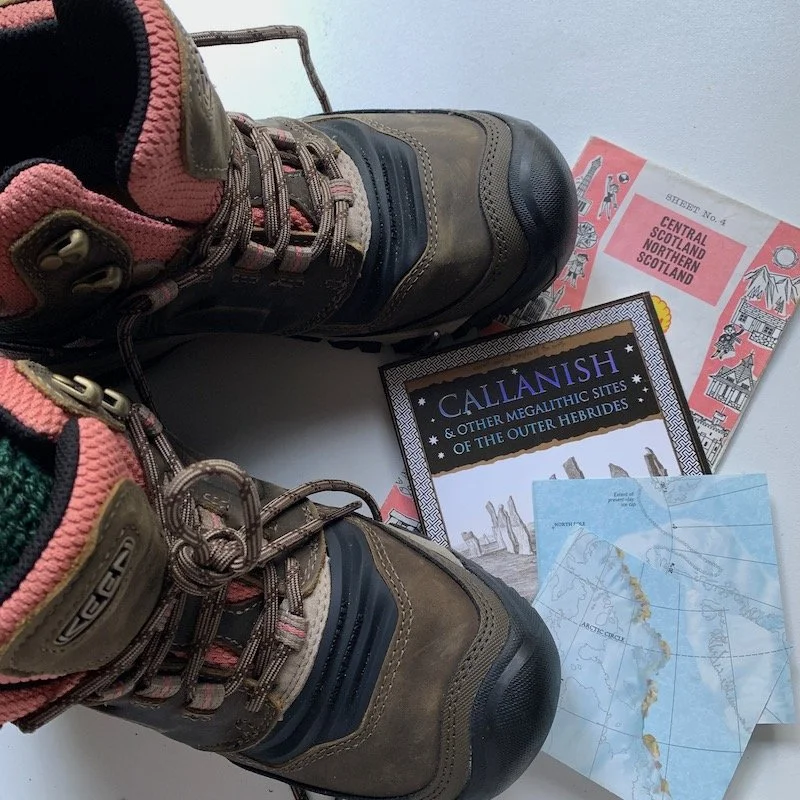Residencies: Part Three
The rocks and stones are calling me again - at the NES artist residency in Skagaströnd, Iceland in 2019.
When travelling you have to be ready for all contingencies. This applies to undertaking artists residencies as well. Much of the work is site-specific, responding to the new environment with your own ways of creating. Ideas emerge as you walk the landscape. Colours jump out, you are seeing the world with fresh eyes.
I like to do a bit of exploring before I reach my destination. This trip I will land in London first and check out the art galleries and exhibitions. I’m going to the Victoria and Albert Museum, an international craft fair in stately Somerset House and high tea at the Ritz. It’s an orientation, leaving behind all things Australian for Great Britain.
Then the real adventures begin. With a backpack filled with my art gear, myself and fellow traveller Carol will catch a train to Glasgow and the Outer Hebrides, arriving by plane on the beach sands of Barra. I’m manifesting fine weather and sunny skies for the small plane travel. Then it is a “Hebridean Hopscotch” by car and ferries heading north to the Isle of Lewis where I will start my Island Darkroom artist residency.
The first part of any residency is always reconnaissance, going for walks, getting to know the lie of the land. Lots of photos, sketches and writing. As I write, I right my path and find my way forward. Even though I have a project concept for what I will do at the residency, sometimes it needs to be modified according to the circumstances.
Like when I was at Bilpin in the Blue Mountains in March 2021. My original proposal was to respond to the rejuvenation in the bush following the bushfires. By the time I got there in 2021 when the residency resumed after COVID, the bush had rejuvenated. There was actually a flood!
I had brought with me rubbings made from the blackened skeletons of burnt trees that I made in 2020. These became the inspiration for burying papers in the flood mud and creating charcoal marks referencing the trees. I then created a series of three landscapes with paper pulp, something I had never done before. As I was doing this, I noticed the fractal patterns in the bark, these then became the fractal family figures I created as well. Read more here.
Being adaptable and having an open mind meant that I was able to reconfigure how I created to adapt and expand my way of creating. The environment and weather called for a new way to utilise the skills I had brought with me.
Having now been on a number of residencies, I know that these are the most important prerequisites:
· Arrive with no preconceived ideas
· Respond to the new landscape and environment
· Use all your senses to immerse yourself
· Stay portable
· Use your laptop and phone camera as essential documentation tools
· Be daring and courageous – don’t fear “failure”
· Be adaptable and utilise what is to hand
· Experiment to keep expanding and pushing your skills in new directions
· Have fun and do things you might never have done before
· Keep learning and being open to other customs and ideas
That’s it! Oh and keep doing my daily practice. Who knows what artworks will emerge. Stay tuned for next week’s Sunday blogpost from London. Ta ra!!
Trees, mud and paper after the floods at BigCi artist residency 2021
First ‘freeform’ paper landscape created at BigCi artist residency 2021





